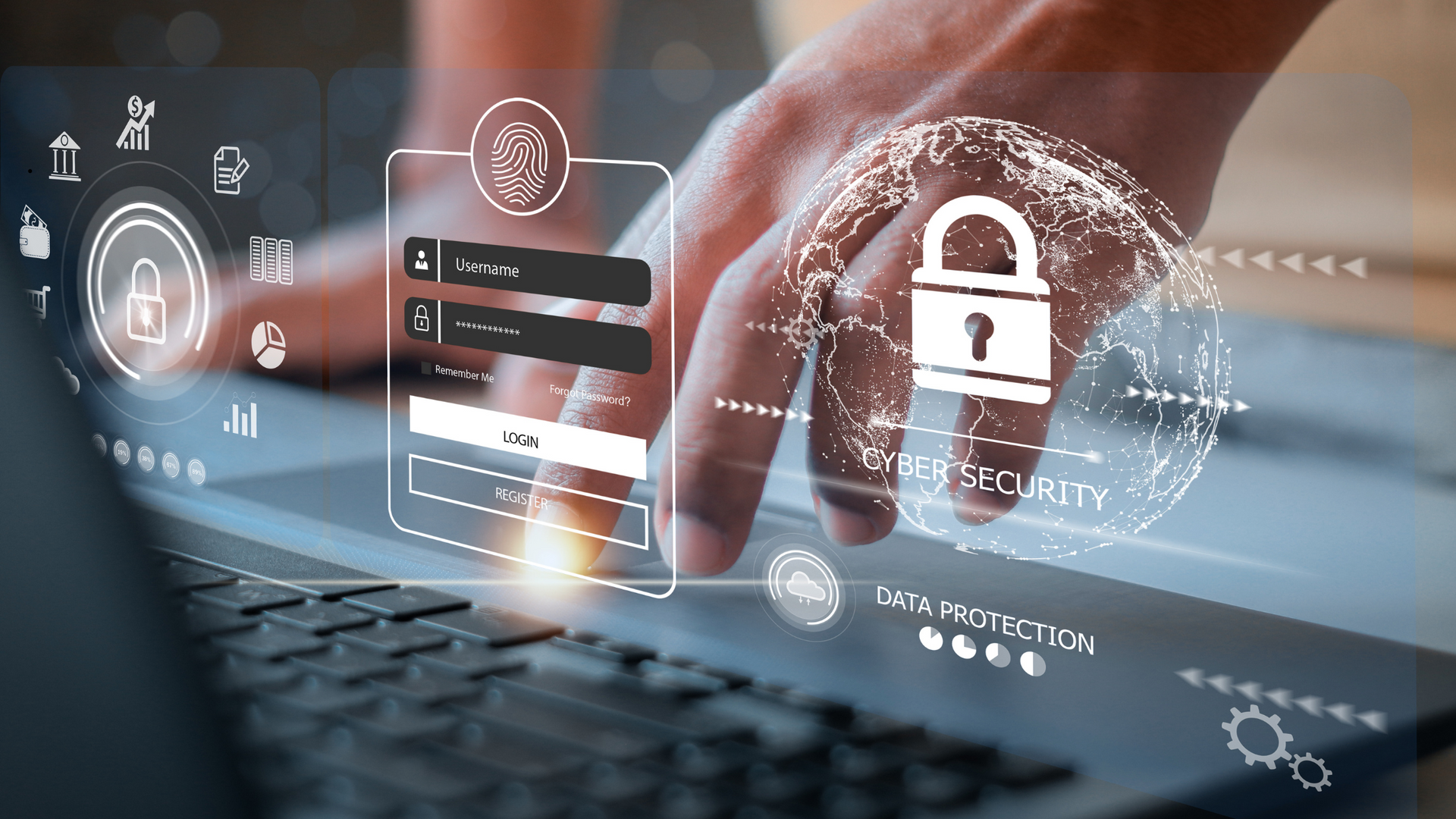The Importance of Data Privacy: Protecting Sensitive Information in the Digital Age
In today’s increasingly connected world, data privacy and protection have become essential for everyone, from large businesses to everyday individuals. As cyber threats continue to evolve in scale and sophistication, the risks of data breaches, identity theft, and financial fraud grow by the day. For businesses, especially those operating in sensitive industries like healthcare, finance, retail, or manufacturing, maintaining strong data security isn't just a best practice, it’s a regulatory necessity. Implementing proactive measures such as encryption, secure access controls, and regular audits can help protect sensitive customer information and build lasting trust. A single breach can lead to legal consequences, reputational damage, and significant financial loss.
For individuals, simple actions like using strong passwords, enabling two-factor authentication, and staying alert to phishing attempts can make a big difference. Whether at work or at home, securing personal data is no longer optional, it’s an everyday responsibility. Prioritizing data protection shows that you value privacy, safety, and ethical digital behavior in an age when information is a valuable asset.

Understanding Data Privacy and Compliance
Data privacy is about more than just protecting information, it’s about respecting the people behind that data. Whether you’re storing client records, processing online payments, or managing employee details, how you collect, handle, and protect that information reflects your organization’s integrity. At its core, data privacy means putting clear boundaries in place to keep sensitive data safe from misuse, leaks, or unauthorized access.
Different industries face unique challenges, and that’s why regulations like GDPR, HIPAA, and CCPA exist, to hold businesses accountable and give individuals control over their personal information. These laws set the framework for how Personally Identifiable Information (PII) must be gathered, stored, shared, and deleted. But compliance isn’t just about avoiding fines or audits, it’s about earning trust. When customers know their data is secure, they’re more likely to do business with you. Taking privacy seriously helps you stay ahead of evolving threats, reduce risk, and show your audience that you value their safety as much as your own success.
Healthcare: HIPAA Compliance and PHI Protection
In the healthcare industry, protecting patient data is not just a matter of ethics, it’s the law. The Health Insurance Portability and Accountability Act (HIPAA) outlines strict rules for how healthcare providers, insurers, and business associates must manage Protected Health Information (PHI). This includes everything from medical histories and lab results to billing records and insurance information. Failing to comply can result in serious consequences, including fines, lawsuits, and a loss of patient trust.
To stay HIPAA-compliant, start by encrypting all PHI, whether it’s stored on local servers, in the cloud, or being transmitted between systems. Only authorized personnel should have access to sensitive records, and that access should be based on their role and responsibilities. Multi-factor authentication (MFA) is essential to securing login credentials, especially for systems that store or transmit PHI. Beyond technology, education matters. Train staff regularly on how to identify threats like phishing attempts, avoid accidental disclosures, and properly handle data.
Regular risk assessments help identify gaps in your security and ensure you’re up to date with evolving HIPAA standards. And don’t forget the end of the data lifecycle, establish clear procedures for the secure disposal of outdated medical records, whether physical or digital. When it comes to PHI, being proactive is the best way to protect your patients, and your practice.
Financial Sector: Safeguarding Credit Card and Payment Data
In the financial world, trust is everything, and that trust hinges on keeping sensitive payment data secure. Whether you're a large bank, a local credit union, or a small business accepting credit cards, protecting your customers’ financial information is essential. That’s why the Payment Card Industry Data Security Standard (PCI DSS) exists: to help businesses safeguard cardholder data and reduce the risk of fraud, breaches, and identity theft.
One of the most important rules? Never store credit card numbers or CVV codes in unencrypted formats like spreadsheets, emails, or text documents. Instead, use advanced security technologies like tokenization and end-to-end encryption to shield this data during storage and transmission. Firewalls and intrusion detection systems should be set up to actively monitor your networks and detect any unauthorized activity before it escalates.
Regularly updating software and applying security patches is also critical, outdated systems are often the easiest target for cybercriminals. Equally important is employee training. Make sure your staff understands how to handle payments securely, recognize phishing scams, and follow internal protocols for fraud prevention.
Lastly, implement real-time transaction monitoring tools to flag unusual activity and stop threats in their tracks. By combining technology, policies, and education, financial institutions can create a secure environment where customers feel confident trusting you with their money.
Retail and E-Commerce: Protecting Customer Data Online
Online shopping has become second nature for many of us, but behind every checkout page is a responsibility: keeping customer data safe. In the world of retail and e-commerce, shoppers trust businesses with highly sensitive information like names, home addresses, email logins, and payment details. One breach, and that trust can vanish overnight.
To protect that trust, every online business must prioritize cybersecurity. Start by using Secure Socket Layer (SSL) encryption across your entire site, not just during checkout. This ensures that all data transmitted between the customer and your site is encrypted and unreadable to anyone trying to intercept it.
Next, secure customer accounts with robust authentication, like requiring strong passwords and offering two-factor authentication (2FA). Avoid collecting or storing customer data that you don’t truly need, especially payment details that could be compromised in a breach.
Your team also plays a crucial role. Train employees to identify phishing scams, malicious links, and potential malware threats. A single mistake, like clicking a harmful email, can expose your entire database.
Enforce clear, consistent policies for secure checkout procedures, including fraud filters and address verification systems. And finally, invest in smart, AI-driven threat detection tools that can identify abnormal behavior and flag potential cyberattacks in real time.
When you take these proactive steps, you show your customers that their privacy matters, and that your brand is one they can trust with their most personal information.
Manufacturing: NIST Compliance and Protecting Intellectual Property
In today’s data-driven manufacturing environment, protecting intellectual property (IP) is just as vital as producing quality goods. From proprietary designs to supply chain logistics, manufacturers are responsible for securing a wide range of digital assets that, if exposed, could severely impact competitiveness, revenue, and customer trust. That’s where the NIST Cybersecurity Framework comes in, a trusted roadmap that helps manufacturing companies build a resilient cybersecurity infrastructure.
To align with NIST guidelines, start by conducting regular risk assessments. These help you uncover vulnerabilities in both digital and physical systems before they become entry points for attackers. Once risks are identified, implement layered access controls to ensure only authorized personnel can interact with critical systems or data.
Backup and disaster recovery strategies are equally important. Create a comprehensive contingency plan that includes frequent backups of essential data, software, and hardware configurations. Regularly test these backups to ensure they’re reliable and restorable in the event of a system failure or cyberattack.
Data encryption is non-negotiable, especially when handling proprietary designs and vendor information. Make sure all sensitive files are encrypted both at rest and in transit. Pair this with a clearly defined incident response plan that outlines who does what in the event of a breach, this minimizes confusion and downtime when quick action is needed.
Don’t overlook your industrial control systems (ICS) and Internet of Things (IoT) devices. These connected systems are often prime targets for cybercriminals. Securing them with firmware updates, endpoint protection, and network segmentation can prevent a minor issue from spiraling into a full-scale disruption.
Lastly, invest in employee awareness. Host regular training sessions on cybersecurity best practices, social engineering red flags, and secure handling of sensitive data. When your team understands the importance of cybersecurity, they become your first line of defense.
By following the NIST framework, manufacturers not only meet compliance standards but also create a safer, smarter, and more competitive operation in an increasingly connected world.
Best Practices for Data Protection & Security in Business
Regardless of industry, all businesses should follow these key practices to enhance data privacy and security:
1. Encrypt Sensitive Data
Encryption ensures that even if data is compromised, it remains unreadable to unauthorized parties. This applies to stored data, transmitted data, and backups.
2. Implement Strong Access Controls
Restricting access to sensitive data minimizes the risk of insider threats and unauthorized breaches. Use:
• Role-based access control (RBAC)
• Multi-factor authentication (MFA)
• Password managers and strong authentication policies
• Least privilege access policies
3. Avoid Sending Sensitive Information via Email
Email is one of the most vulnerable communication channels. Never send credit card details, passwords, or confidential data via email. Instead, use secure file-sharing platforms or encrypted messaging services.
4. Regularly Update Software and Systems
Cybercriminals exploit outdated software. Ensure your organization regularly updates:
• Operating systems
• Firewalls and security patches
• Antivirus and anti-malware programs
• Network firmware and security protocols
5. Conduct Employee Training on Data Security
Human error is a leading cause of data breaches. Businesses should provide regular training on recognizing phishing emails, password management, secure file handling, and social engineering attacks.
6. Establish a Data Breach Response Plan
Despite best efforts, breaches can still occur. Having a clear response plan helps businesses act quickly to mitigate damage, notify affected individuals, and comply with legal reporting requirements.
7. Secure Cloud Storage and Backup Solutions
With the increasing reliance on cloud services, businesses must:
• Choose reputable cloud providers that comply with security standards.
• Regularly back up critical data to prevent loss from cyberattacks or system failures.
• Encrypt cloud-stored data to prevent unauthorized access.
• Enforce multi-factor authentication for cloud access.
8. Monitor and Audit Network Activity
Regular monitoring of network activity helps detect suspicious behavior before it escalates into a breach. Utilize:
• Security Information and Event Management (SIEM) tools.
• Automated threat detection and response systems.
• Regular internal and third-party security audits.
9. Implement Zero-Trust Security Framework
A zero-trust approach assumes no entity—inside or outside the network—should be trusted by default. This means:
• Verifying every user and device before granting access.
• Continuously monitoring and adapting security policies.
• Using micro-segmentation to limit exposure of critical systems.
Best Practices for Data Protection & Privacy for Families & Home
While businesses must prioritize data security, individuals and families should also take steps to protect their personal information at home. Cybercriminals often target personal computers, mobile devices, and online accounts.
Here are some best practices for home data security:
1. Use Strong Passwords and Multi-Factor Authentication (MFA)
• Create unique, complex passwords for each account.
• Use an established reputable password manager to store credentials securely and enable MFA.
• Enable MFA on all sensitive accounts, especially banking and email.
2. Secure Your Home Wi-Fi Network
• Change the default router login credentials.
• Use WPA3 encryption for a secure network.
• Avoid sharing your Wi-Fi password with untrusted individuals.
• If available, enable a guest network for your visitors.
3. Secure Smart Home Devices
• Change the default passwords on all Wi-Fi enabled devices (IoT).
• Keep firmware updated to address security vulnerabilities.
• Disable unnecessary features that may expose data.
4. Recognize and Avoid Phishing Scams
• Be cautious of emails or messages requesting personal information.
• Never click on suspicious links or download unknown attachments.
• Verify the sender before responding to sensitive requests.
5. Educate Children About Cybersecurity
• Teach kids about online safety and the risks of sharing personal information.
• Enable parental controls to restrict access to harmful content.
• Monitor social media activity, personal information sharing, and review settings.
• Explore apps that can assist with monitoring and restricting access to your child’s phone, apps and websites.
• Hold regular and open discussions about cybersecurity and privacy.
6. Protect Elderly and Less Tech-Savvy Individuals from Scams
• Educate older family members about common online scams, such as phishing emails, fraudulent phone calls, and fake tech support schemes.
• Require them to verify all requests for any personal or financial information before responding.
• Help them set up strong passwords, MFA, and privacy settings on their devices.
• Install security software and enable automatic updates to protect against malware and cyber threats.
WE ARE PROUD TO BE
More Recent News







